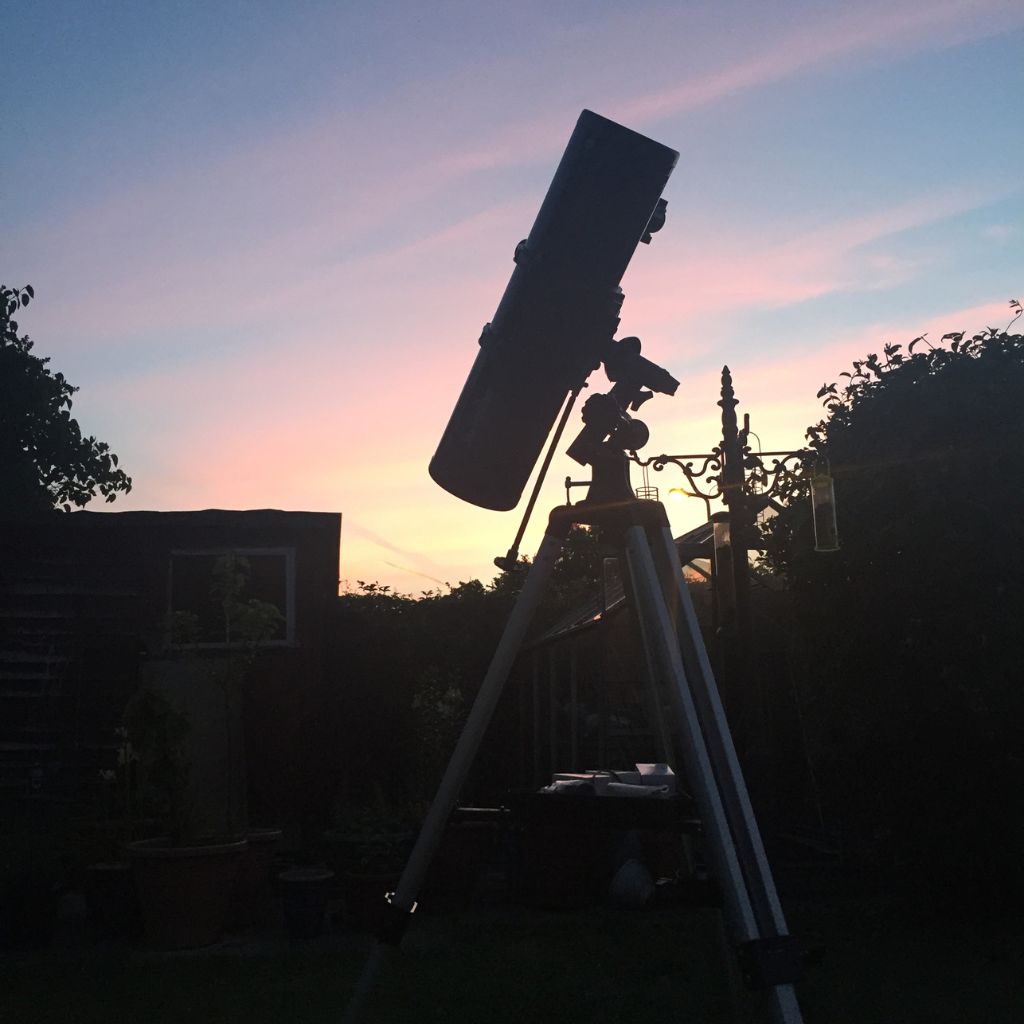This site contains affiliate links to products. I may receive a commission for purchases made through these links.
If you’re like me, your home observatory is more than just a hobby—it’s a passion. But as with any passion, it needs care and attention to thrive. That’s why I’m here to talk about long-term care and upgrades for home observatories.
Keeping your observatory in top shape isn’t just about regular maintenance. It’s also about keeping up with the latest tech and trends. Upgrades can breathe new life into your observatory, ensuring it stays relevant and functional for years to come.
So, let’s dive in and explore how to keep your home observatory at the cutting edge, and ensure it’s well-maintained for the long haul. Trust me, it’s easier than you might think.
The Importance of Long-Term Care for Home Observatories
Understanding the importance of long-term care for home observatories begins with recognizing the value of your investment. Built to last, home observatories aren’t just a hobbyist’s sanctuary; they’re a testament to the wonder and awe-inspiring nature of the cosmos.
Investing time, money, and effort into maintaining a home observatory isn’t merely about keeping it functional. It’s about making sure you’re able to experience and appreciate the stunning celestial vistas your observatory can offer for years to come.
Just like any other sizable investment, home observatories require regular care and upkeep. Ignoring maintenance may lead to equipment degradation, wear and tear, and possibly even obsoleting. This is where the long-term care of observatories steps in, ensuring the protracted life and efficiency of your cherished stargazing tool.
But why should we stress long-term care? Let’s break it down further.
Preventive Measures
First, let’s talk about preventative measures. Preventative measures are actions you take to prevent potential issues rather than simply fixing them when they occur. These include, but aren’t limited to:
- Regular cleaning of lenses.
- Securing all equipment against inclement weather.
- Ensuring (and periodically checking) that all wiring is proper and safe.
Upgrades
Next, there’s the concept of upgrades. Being equipped with the latest tools and technology not only enhances your observatory experience but also increases the longevity of your setup. After all, technology always evolves, and staying updated prevents your gear from growing obsolete.
So, understanding the importance of long-term care for home observatories is integral. It not only involves maintaining your current equipment functional but also keeping up with new additions and changes. With this in mind, let’s delve deeper into specific tips on how to take care of and upgrade your home observatory effectively.
Regular Maintenance and Inspections for Home Observatories
A home observatory isn’t just a one-time setup. It’s a living, breathing entity, needing constant care and attention to ensure peak performance and longevity. Regular maintenance and inspections are therefore not only essential but indispensable. After all, we must preserve the investment of an operational home observatory.
A fundamental principle of maintenance is cleaning. Optical elements, like telescope lenses, collect dirt and dust over time. However, you should tread carefully when cleaning these delicate components. Using air blowers or lens cleaning cloth can gently remove dust particles without scratching the equipment.
Beyond cleaning, you should also perform regular inspections of all moving parts. Pay particular attention to the mount since improper alignment or loose screws can greatly affect the quality of images or data. It’s vital to keep these components in check.
Additionally, it’s crucial to ensure components are well-lubricated to prevent operational issues. Use a high-quality synthetic oil. Avoid petroleum-based lubricants, as they tend to break down over time.
Temperature and humidity also have a significant impact on your equipment. Keep the observatory dry and well-ventilated as excessive moisture can corrode metal parts while a lack of fresh air can cause mold growth.
Implementing a regular maintenance program might seem daunting initially but it’s a measure that could save you costly repairs or replacements in the long run. It also helps you stay aware of emerging problems before they turn into bigger issues.
Advanced technologies can also assist you in equipment management. Modern accessories, like weather stations or remote-sensing devices, can provide real-time data about your observatory environment. Such innovations not only make maintenance more manageable but also enhance your overall observatory experience.
Investing time in regular upkeep might seem tedious. But believe me, a well-maintained home observatory not only increases equipment longevity but enhances the quality of your sky-gazing experiences. So, maintenance and inspections are definitely worth the effort you put in.
Upgrading Your Home Observatory: Why and How
Just like the way I pursue regular maintenance, upgrading my home observatory also plays a significant role in better performing equipment. Upgrades not only help in advancing the capabilities of my equipment but also extend its age. With every new upgrade, my home observatory gets closer to those operated by professional astronomers.
Why upgrade? You may ask. In simple terms, technological advancements are always on the move. They introduce better and advanced features all the time. For instance, new models of telescopes are more light-sensitive and can capture detailed images than older models. By keeping my home observatory up-to-date with these advancements, I’m maximizing my sky-gazing experiences.
In the table below, I’ve listed some reasons why I consider upgrades necessary for my home observatory:
| Why Upgrade? | Description |
|---|---|
| Improve Astronomical Observations | Advance equipment like new telescopes and cameras can facilitate more accurate and in-depth astronomical findings |
| Increase Equipment’s Lifespan | Regular updates can keep the equipment running efficiently and extend their lifespan |
| Enhance Sky-Gazing Experiences | With every upgrade, quality of the observations improves, making the sky-gazing experience more engaging |
How to upgrade? I’ve found that a gradual approach works best for me. I’ve never tried to upgrade everything all at once. Rather, I prioritize the most needed upgrades and pursue them one by one. I ensure I’m fully conversant with every single new element before moving on to the next.
Above all, I keep in mind that every home observatory and sky-gazer is unique. My upgrades depend on my own set of requirements – the type of observations I seek, my current equipment’s capabilities, and certainly, my budget. It’s all about what works best for me and adds value to my astronomical pursuits.
But remember, your compatibility and fiscal capabilities are the determining factors when it comes to upgrades. Unrealistic upgrades often result in complex systems that are difficult to maintain and operate efficiently.
Knowledge is the key here. Make sure you’re well-informed about the markets, the products and their performance capabilities. After all, it’s the desire to explore the universe that drives our passion for astronomy. And remember, even the smallest upgrade can take you “one-step closer to the stars”.
Choosing the Right Technology and Equipment for Upgrades
When considering an upgrade, it’s essential to prioritize those improvements that will genuinely enhance your stargazing experience. You’ll find a range of technologies and equipment on the market, each with specific benefits and downsides. Therefore, I suggest taking the time to research thoroughly and weigh both your current needs and future goals.
Before diving into the process of selecting the right items, start by assessing your current equipment. It’s a crucial step that can help shed light on the most needed upgrades. You might realize that some components are no longer serving their purpose, while others may be holding back your overall system’s functionality.
Following are some typical categories of upgrades that usually add significant value to a home observatory:
- Telescope Enhancements: It’s worth looking into high-performance telescopes. They have superior optics or additional features such as Go-To capability.
- Observatory Automation: You can consider investing in automation systems for your observatory. It makes your stargazing sessions easier and helps in performing time-consuming tasks efficiently.
- Advanced Camera Equipment: If you’re into astrophotography, top-notch camera gear can dramatically improve picture quality.
- Mount Upgrades: You’ll want a durable, smooth-operating mount to support your telescope. Especially if you’re planning on taking long-exposure pictures.
Remember, it’s not just about getting the most expensive equipment on the market. Instead, strike a smart balance between cost and performance. Don’t let the initial expense deter you. Often, investing in high-quality upgrades leads to reduced maintenance costs and longer equipment lifespan down the line. Additionally, do factor in the learning curve associated with each new piece of hardware.
Lastly, don’t overlook the value of forums and online communities of fellow stargazers. They’re excellent resources to get unbiased reviews and practical tips on choosing technology and equipment upgrades. Now, let’s dive into each of these categories and learn what each option specifically has to offer.
Embracing Emerging Trends in Home Observatory Design
One undeniable fact about our ever-evolving world is that advancements in technology are continuously reshaping industries. Astronomy is no exception. With the constant debut of new software, hardware, and internet-based tools, the realm of home observatories is continually expanding. Whether your goal is to enjoy amateur sky-gazing or delve into serious astrophotography, keeping pace with contemporary trends can take your observation experience to the next level.
The Trend toward Automation
Automation has become a standard feature within the modern home observatory landscape. Today’s astronomy enthusiasts are tapping into technologies that automate everything from dome rotation to mount movement, with some even offering full observatory control remotely. No longer do I need to manually track celestial elements throughout the night, which not only saves time but also increases the accuracy of my observations.
Reach out to communities or forum members for reliable automation software recommendations. You’ll likely find plenty of valuable insights from real users.
Incorporating High-Resolution Cameras
Remember, a home observatory is basically incomplete without a camera ready to capture stunning astronomical phenomena. Recent advancements have rendered high-resolution cameras more accessible than ever. The calibre of your imagery vastly depends on your camera specifications, so it’s worth investing in a quality piece.
Exploring Virtual Observatory Software
Virtual observatory software is another trend that’s rapidly gaining traction. These tools enable you to explore the universe from the comfort of your home, even when external conditions don’t allow physical observation.
So, as you consider enhancing your home observatory setup, keep an open mind for contemporary trends. In technology, tomorrow’s staple is often today’s novelty. Strive for upgrades that sync well with these pioneering changes, and always be ready to adopt innovations that add convenience, efficiency, and a touch of modernity to your personal universe exploring endeavour.
Conclusion: Ensuring the Future of Your Home Observatory
It’s clear that the world of home observatories is rapidly evolving. Automation, high-resolution cameras, and virtual observatory software are becoming the norm. They’re not just trends – they’re the future. As we continue to push the boundaries of what’s possible in our backyards, it’s vital to stay ahead of the curve.
Remember, these upgrades aren’t just about keeping up with the Joneses. They’re about enhancing your astronomical experience and making the cosmos more accessible than ever before. So don’t shy away from embracing these changes. Instead, see them as opportunities to take your home observatory to the next level. After all, the universe is constantly expanding – shouldn’t your home observatory do the same?






